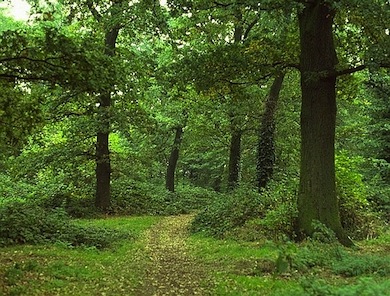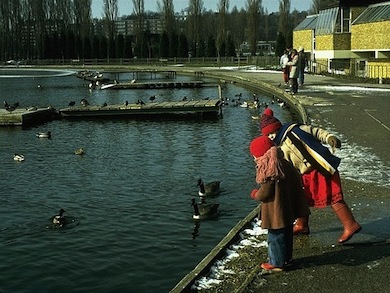The focus of this site is the lake, which is the largest water body in Merton and is important for its wetland birds. Also included is Horse Close Wood, on the northern boundary of the park and the hedgerows beside the District Line railway embankment.
Local Wildlife Site
Accessible Sites of Importance for Nature Conservation
Wimbledon Park - Merton section
Borough: Merton
Grade: Borough Grade I
Access: Free public access (part of site)
Area: 38.29 ha
Description
Wildlife
The focus of this site is the lake, which is the largest water body in Merton and is important for its wetland birds. Also included is a tiny remnant of the ancient Ashen Grove Wood, Horse Close Wood, on the northern boundary of the park and the hedgerows beside the District Line railway embankment. The site occupies a small remnant of Earl Spencer's eighteenth century park, landscaped by Capability Brown, who created the lake with a dam across Wimbledon Park Brook. On account of this history the park is on the English Heritage schedule of parks and gardens. The hedgerows, wood and the eastern edge of the lake are within the public Wimbledon Park, but there is no access to the other edges of the lake and the golf course. Little survives of the original park design beside a few old oaks in the golf course. Further value here resides in a larger number of younger parkland oaks of the golf course, but the medley of other trees is of more limited value. A small neglected remnant of the ancient Ashen Grove Wood lies on the southern boundary of the golf course with the public park. This is one of the very few ancient woods in the whole borough. Although the birdlife on the lake is severely limited by the carp fishery and recreational disturbance, it is the most varied to the seen in Merton. Good numbers of shoveler and pochard visit in the winter and breeding birds include great crested grebe, tufted duck and mute swan. A long list of other species use the lake on passage. Four species of bat feed around the lake on summer evenings. Horse Close Wood dates back at least 300 years, but is probably of planted origin. It is dominated by ash (Fraxinus excelsior) and oak (Quercus robur) with a single Midland hawthorn (Crataegus laevigata) a few hazel (Corylus avellana) and some stands of native bluebells (Hyacynthoides non-scripta). It is the best wood in a large area of Merton and Wandsworth boroughs and it supports such breeding birds as great spotted woodpecker, blackcap, chiffchaff, spotted flycatcher and chaffinch. The Capital Ring Walk passes through the park.
Horse Close Wood, Wimbledon Park © Dave Dawson

Children at the lake in Wimbledon Park © Dave Dawson
Feedback
Have a question or a comment for this site, or notice anything missing or out of date? Please contact us.
